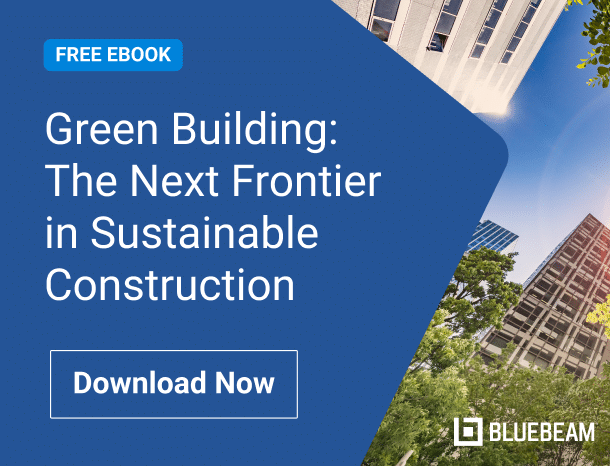Despite political resistance to environment, social and governance (ESG) practices and reporting in the United States, many builders and manufacturers are finding unexpected value.
“Companies realize that ESG principles are common sense and reduce risk and costs while enhancing brand reputation and loyalty,” said Sara Gutterman, CEO of Green Builder Media. “Financial benefits and regulatory pressures are also pushing the building industry to adopt ESG, making it more mainstream.”
Three main elements drive ESG. “First is the environmental reality—we’ve already hit 1.5°C of warming globally,” Gutterman said. Second is the social reality of climate anxiety, “especially among younger generations, who think humanity is doomed because of climate change.” Third is investor demand, making ESG and climate technology the fastest growing portion of venture capital.
To a large extent, ESG builds on the tenets that firms already follow to manage environmental and societal risks and operate ethically. More than ever, lenders are requiring ESG strategies and full reports when companies seek financing. Also, in March 2024 the Securities and Exchange Commission (SEC) adopted rules requiring disclosures about climate-related risks that impact business strategy, operational results or finances in SEC filings beginning year-end 2025. Plus, stakeholders and shareholders often prefer companies with strong ESG performance, which can ease access to new markets and opportunities.
This article takes a closer look at the benefits of ESG reporting for all construction firms and manufacturers—not just publicly traded ones—along with the new SEC and European Union (EU) rules, material metrics for ESG, and a roadmap to get started.
The advantages of adopting ESG
ESG creates value in various ways, from making borrowing easier to creating a positive work culture:
- Streamlined access to capital: ESG reporting demonstrates a commitment to environmental and social responsibility, which can translate into better terms when securing financing. “Investor demand and greater access to capital can drive ESG adoption for builders, while manufacturers often see more leadership commitment to sustainability and ESG at the executive and board levels,” Gutterman said.
- Minimized operational risks: Construction firms can protect their financial performance and reputation by identifying and mitigating risks before they become public issues and implementing effective risk management systems and strong internal controls.
- Enhanced operational efficiency and cost reduction: Acting in a sustainable manner can slash operating expenses and increase profits by up to 60%, according to McKinsey. For instance, energy-efficient equipment and techniques can lower power bills and circular design principles help reduce waste.
- Increased consumer trust and improved brand reputation: Consumers are using their purchasing power to drive change toward a sustainable future. McKinsey research found that more than 70% of consumers surveyed on purchases in multiple industries, including building, said they would pay an additional 5% for a green product if it met the same performance standards as a nongreen alternative.
- Improved talent acquisition and retention: The social component of ESG encourages an inclusive and safe work environment, where prospective employees—especially the younger demographic—want to work and current employees want to remain.
Moving from SEC regulations to EU alignment
A growing number of construction companies are embracing ESG practices, procuring carbon offsets and enhancing the transparency and strength of their sustainability commitments, Victoria Muharsky wrote in an article for Green Builder Media. In fact, the majority of national home builders report on ESG metrics, whatever they call them, although small companies lag on adoption.
The passage of the SEC climate-related disclosure rules in March 2024 signaled increasing investor demand for corporate sustainability. The SEC requires reporting on Scope 1 and 2 emissions—direct emissions from sources companies own or control and indirect emissions from the production of energy they purchase. Corporations with 75 million or more publicly traded shares must meet even more rigorous requirements, including disclosing costs of severe weather events and other natural disasters, as well as actual and potential material impacts of climate-related risks.
The United States often follows Europe’s regulatory direction—slowly. Most recently, the European Union’s Corporate Sustainability Reporting Directive (CSRD) mandated disclosures starting in 2025 for the 2024 financial year. In time, the SEC will likely align with these requirements.
ESG drivers and metrics for construction
Determining the most pressing ESG risks and opportunities usually starts with an internal audit as well as benchmarking against peers. Here are metrics that Gutterman said firms in the building sector most often report.
Environment: Energy efficiency, GHG emissions, site selection, supply chain management and water management.
Social: Employee retention and satisfaction, diversity, equity and inclusion initiatives, and universal design principles for accessible housing.
Governance: Board composition and oversight, environmental, health and safety management, risk management, code of ethics, supplier code of conduct and shareholder agreements.
Selecting the path forward
One look at the alphabet soup of ESG organizations, frameworks and acronyms can stall a company’s best intentions.
Consider the Task Force on Climate-Related Financial Disclosures (TCFD) and Sustainability Accounting Standards Board (SASB), two of the best-known standards for disclosure, which recently consolidated into the International Financial Reporting Standards (IFRS) Sustainability Disclosure Standards from the International Sustainability Standards Board (ISSB).
If that’s not muddled enough, throw in the Global Reporting Initiative (GRI) and UN Sustainable Development Goals (UN SDGs).
To get through this maze, it helps to follow guidelines developed specifically for the building sector. One possibility is the comprehensive guide that Green Builder Media developed with the help of the ESG for Building Working Group, a consortium of more than 60 builders, architects, manufacturers, nonprofit participants, energy consultants and developers. ESG for Building: Defining Principles for the Building Industry focuses mainly on residential and community development, but it lets readers choose the path that works best for them as they implement ESG practices and streamline reporting. The shift toward ESG practices and reporting doesn’t upend how builders and manufacturers operate today. Rather, it fine-tunes in a way that can make companies more sustainable, profitable and resilient.













